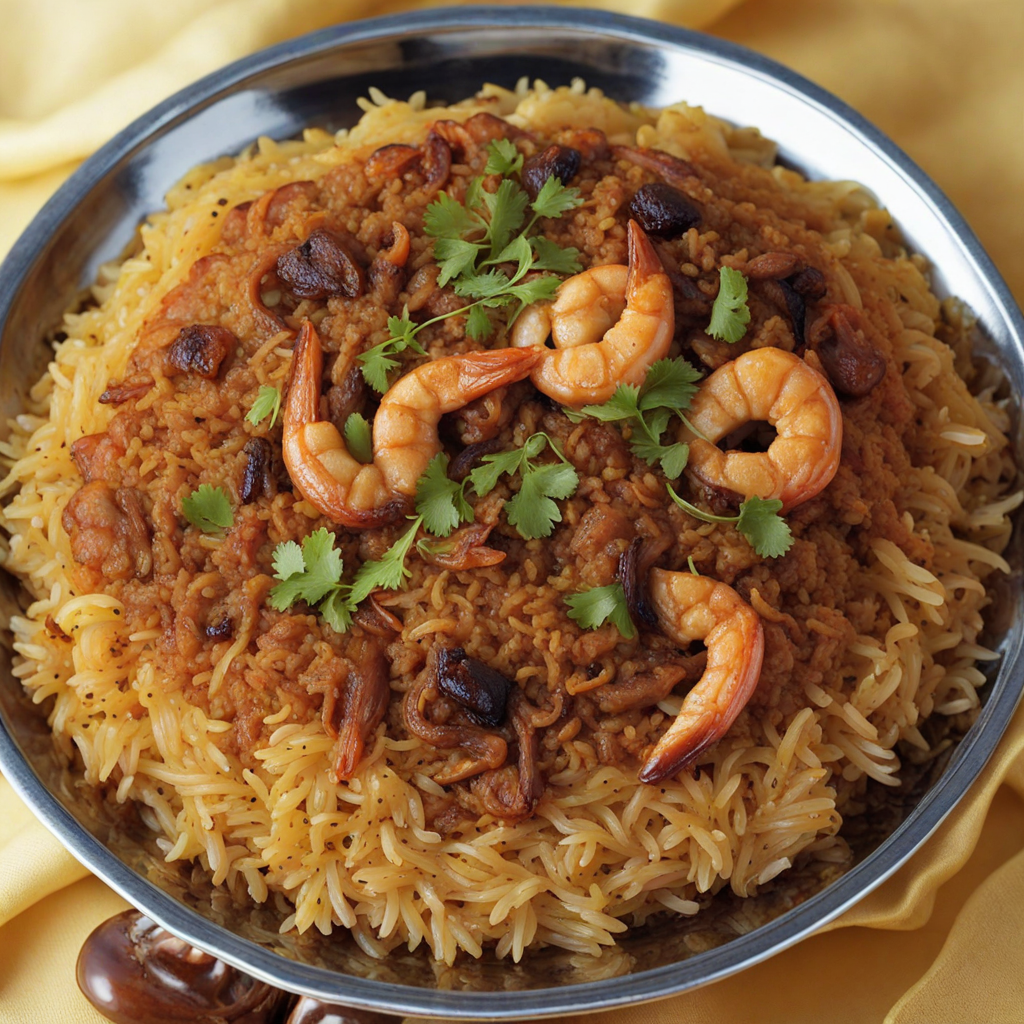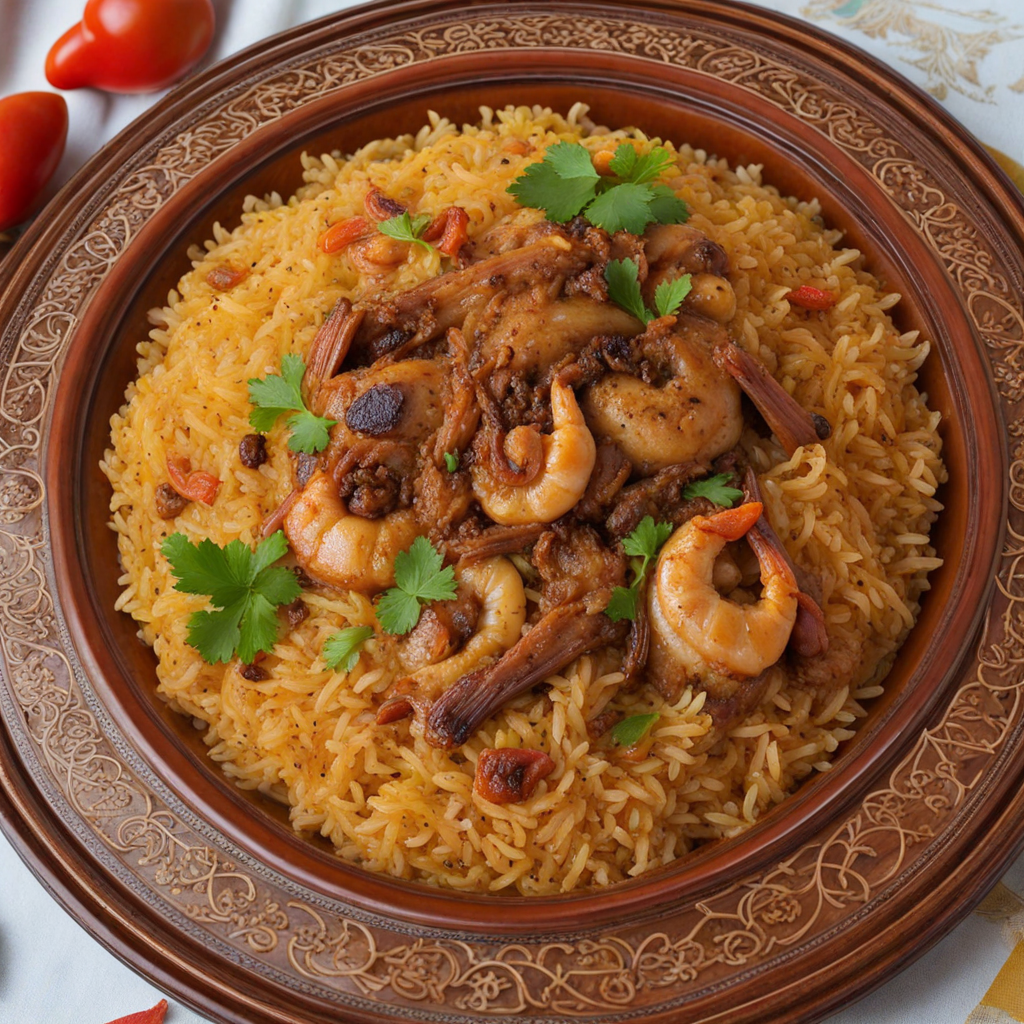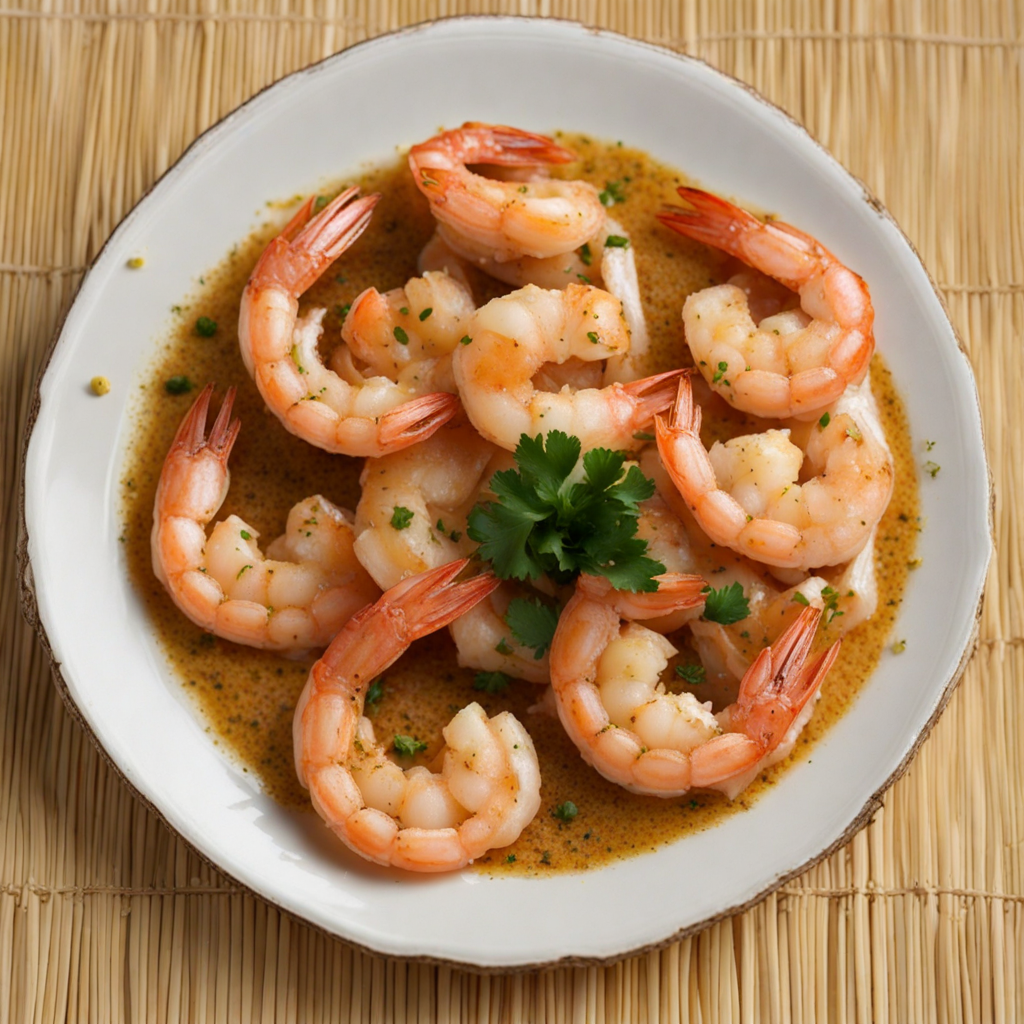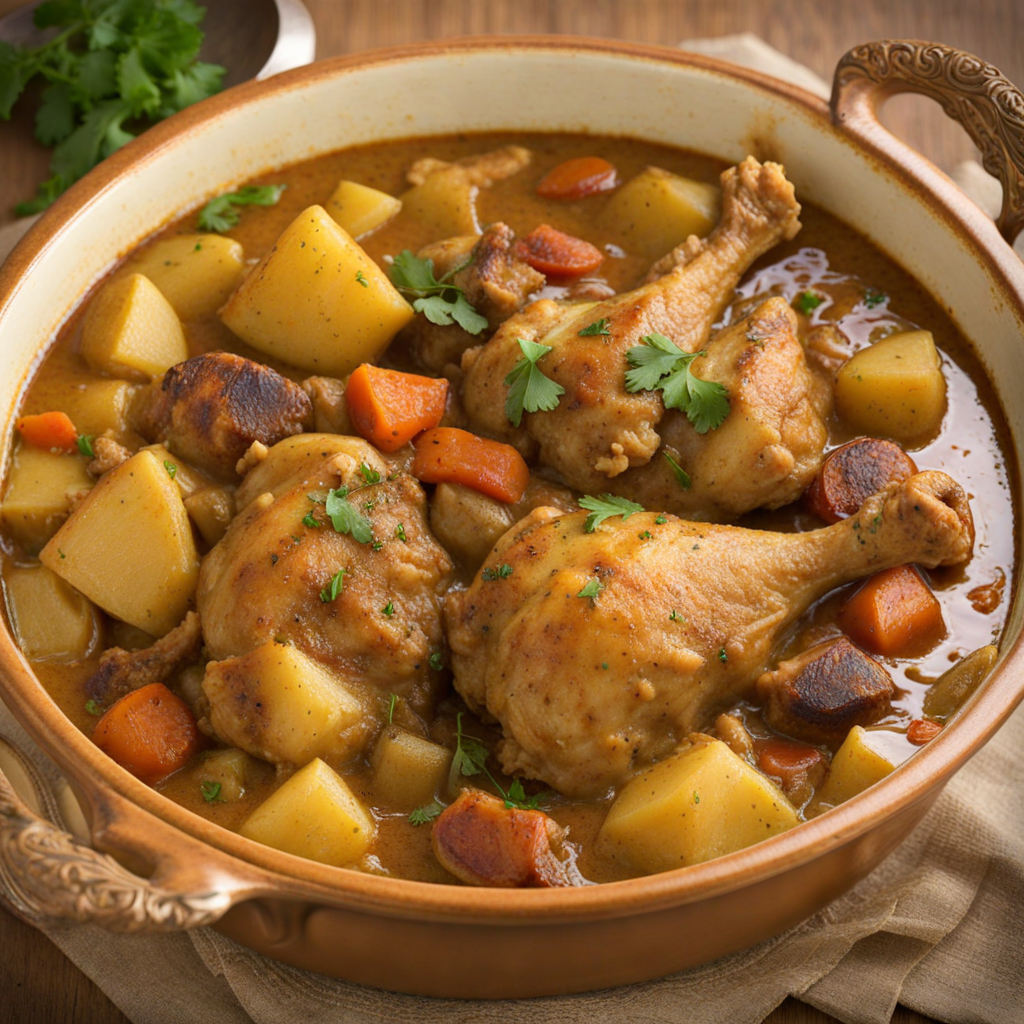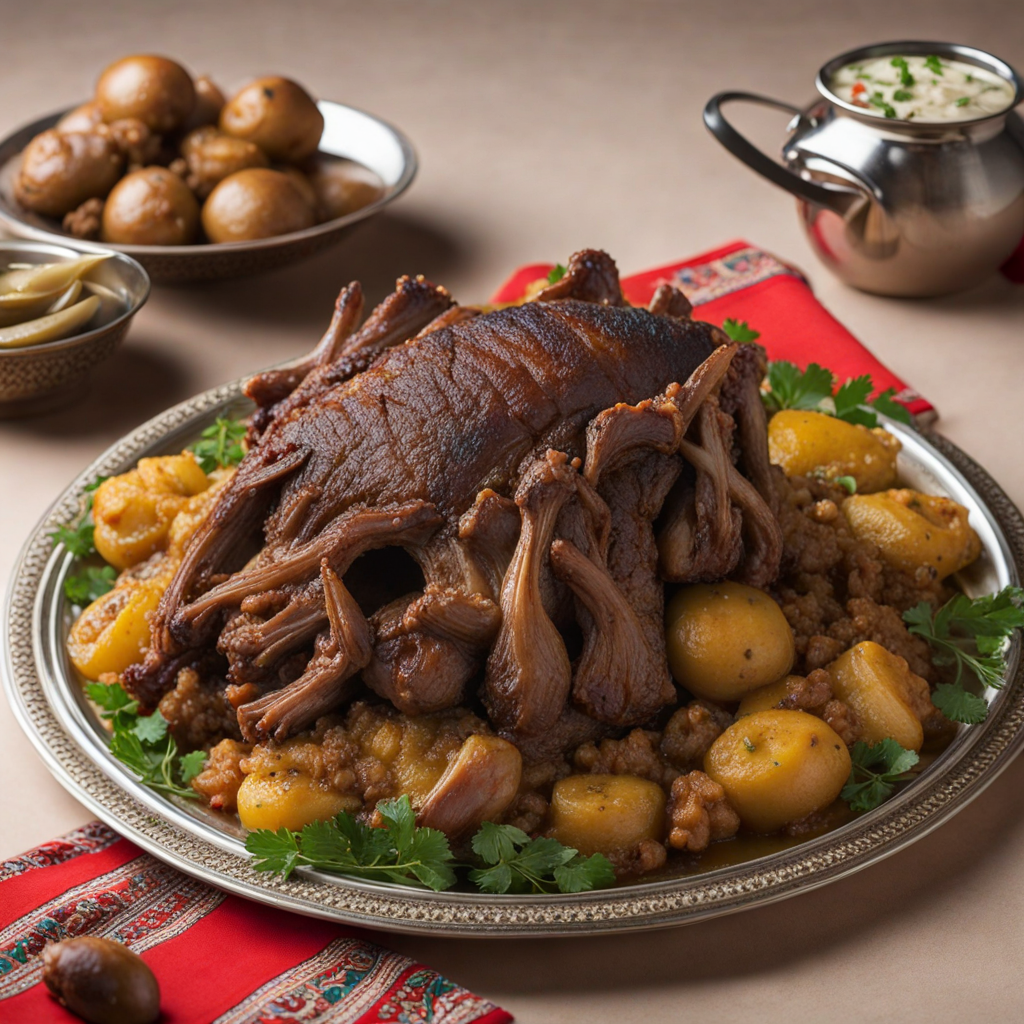Majboos
Majboos is a fragrant and hearty rice dish that showcases the vibrant culinary heritage of Oman. This dish typically features basmati rice, which is cooked to fluffy perfection and infused with a medley of spices such as saffron, cardamom, and cloves. The rice serves as the perfect canvas for a variety of proteins, often lamb, chicken, or fish, which are marinated and slow-cooked to enhance their flavors. The combination of spices and tender meats creates a rich and aromatic experience, making each bite a delightful journey into Omani cuisine. What sets Majboos apart is its method of preparation, which involves layering the spiced meat and rice, allowing the flavors to meld together beautifully. The dish is often garnished with fried onions, raisins, and nuts, adding texture and a subtle sweetness that balances the savory elements. Served with a side of tangy salad or yogurt, Majboos is a complete meal that satisfies both the palate and the appetite, making it a popular choice for gatherings and celebrations. As you delve into Majboos, you’ll discover the essence of Omani culture and hospitality. The dish is not just a meal but an experience, often enjoyed family-style, where diners share from a communal platter. With its complex flavors and inviting aroma, Majboos invites you to savor the warmth of Omani tradition, making it a must-try for anyone looking to explore new tastes and culinary delights.
How It Became This Dish
The History and Cultural Significance of Majboos: A Culinary Journey through Oman Majboos, a fragrant and flavorful rice dish, holds a prominent place in Omani cuisine and culture. Its origins, cultural significance, and evolution over time reflect not only the culinary traditions of Oman but also the influences of trade, geography, and social customs that have shaped the Arabian Peninsula. This exploration of Majboos offers a glimpse into the heart of Omani heritage and its rich gastronomic landscape. #### Origins of Majboos The roots of Majboos can be traced back to the early days of the Arabian Peninsula, where the blending of local customs with the influences of trade routes led to the development of diverse culinary practices. Although rice was not native to the region, it became a staple due to trade with South Asia and other regions. Historical records suggest that rice was introduced to the Arabian Peninsula through these trade connections, particularly from India, Persia, and East Africa. The word "Majboos" itself is derived from the Arabic verb "جَبَسَ" (jabasah), which means "to press" or "to compress." This reflects the method of preparation where rice and meat are layered and cooked together, allowing the flavors to meld. The dish has similarities with other regional rice dishes, such as Saudi Kabsa and Emirati Majboos, but each variation is characterized by unique spices, ingredients, and cooking methods that reflect local tastes. #### Cultural Significance In Oman, Majboos is more than just a meal; it is a symbol of hospitality and tradition. It is often served during significant occasions such as weddings, religious festivals, and national celebrations. The communal aspect of sharing Majboos enhances its cultural relevance, as it brings families and friends together around a single platter. Traditionally, the dish is served on a large round plate, allowing diners to gather around, eat with their hands, and enjoy the camaraderie that comes with shared meals. Majboos is also a reflection of Omani identity and pride. The use of locally sourced ingredients, such as saffron, cardamom, and various spices, showcases the country’s agricultural bounty and the influence of its diverse climate. The dish is often accompanied by side dishes like salad, yogurt, or a tangy sauce called "salsa," which complements its richness. This combination of flavors and textures demonstrates the depth and sophistication of Omani cuisine. #### Development Over Time As Oman moved through different historical phases, so too did Majboos evolve. The arrival of the Portuguese in the 16th century brought new ingredients and cooking techniques that influenced Omani culinary practices. Spices such as cinnamon and cloves, once rare, became more accessible, enriching the flavor profile of Majboos. In the 20th century, the discovery of oil transformed Oman’s economy and, subsequently, its culinary landscape. Increased wealth led to greater availability of imported goods, allowing for experimentation with ingredients and cooking methods. While traditional Majboos remained a staple, modern interpretations emerged, incorporating global flavors and culinary trends. Today, Majboos is celebrated not only as a traditional dish but also as a canvas for culinary creativity. Chefs experiment with various proteins, including chicken, lamb, beef, and seafood, as well as vegetarian versions that highlight local produce. This adaptability demonstrates Majboos's resilience and its ability to absorb influences while retaining its core identity. #### The Preparation of Majboos The preparation of Majboos is a labor of love, often involving several steps that require time and patience. The dish typically begins with marinating the meat (usually chicken or lamb) in a blend of spices, including turmeric, cumin, and black pepper. After marinating, the meat is browned in a pot, followed by the addition of chopped onions, garlic, and tomatoes, which form the base of the sauce. Next, the rice, usually basmati, is added along with water or stock, allowing it to absorb the rich flavors of the meat and spices. The dish is then cooked slowly, allowing the rice to soak up the aromatic broth, resulting in a rich, savory meal. The final touch often includes a sprinkle of fried onions, raisins, or nuts for added texture and flavor. #### Majboos Today In contemporary Oman, Majboos continues to be a beloved dish that transcends generations. It is often featured in restaurants and homes, serving as a reminder of the country’s culinary heritage. The dish has also gained recognition beyond Oman, becoming a popular choice in Gulf cuisine restaurants around the world. Omani chefs and home cooks alike take pride in their unique versions of Majboos, often passed down through family recipes. It is not uncommon to see variations influenced by personal tastes, regional ingredients, or modern culinary techniques. Festivals and food events frequently showcase Majboos, allowing visitors to experience the flavors of Oman firsthand. Furthermore, the dish has become a symbol of Omani hospitality, often served to guests as a gesture of goodwill. The practice of serving Majboos to visitors reflects the cultural value placed on generosity and community in Oman. #### Conclusion Majboos is more than just a dish; it is a reflection of Omani history, culture, and identity. Its origins in the early trade routes, its evolution through historical influences, and its significance in contemporary Omani society all contribute to its status as a cherished culinary tradition. As Majboos continues to adapt and thrive in the modern culinary landscape, it serves as a bridge between the past and the present, linking generations through the shared experience of food. Whether enjoyed at a festive gathering or a casual family meal, Majboos remains a testament to the rich tapestry of Omani cuisine, celebrating the flavors and traditions that define this remarkable country.
You may like
Discover local flavors from Oman


